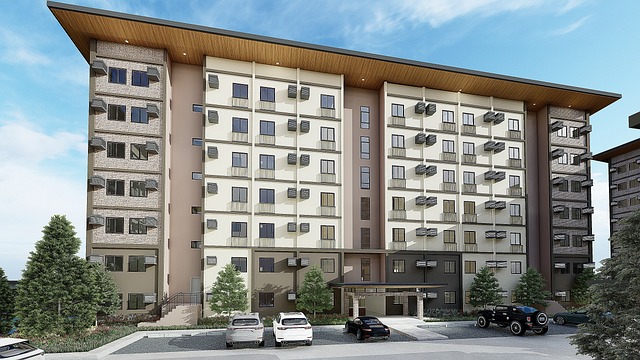Marsiling Ridge is a significant green corridor and multifunctional space within Singapore's North Region, offering expansive open spaces and recreational opportunities alongside being a strategic transportation hub. It boasts direct links to major transit stations like the Marsiling MRT/LRT Station and the Seletar Expressway (SLE), enhancing connectivity across the island, especially near industrial centers, educational institutions, and commercial districts. The integration of Marsiling Ridge into Singapore's urban planning is crucial for improving connectivity and quality of life, being a key element in its infrastructure network. Its exceptional geographical location facilitates efficient movement to economic hubs like the Central Business District (CBD) and Jurong East Regional Center, with upcoming transport infrastructure such as the North-South Corridor and Marsiling-Kranji MRT station set to enhance this connectivity even further. Marsiling Ridge also serves as a residential locale with easy access to numerous educational institutions like the Institute of Technical Education (ITE) and the National University of Singapore (NUS), making it an attractive area for families and students. Additionally, the project to link it to key districts within Singapore's network of green spaces highlights the city-state's dedication to integrating nature into urban living, offering residents a seamless transition from urban activities to recreational pursuits in nature, promoting health, wellness, and community engagement. This initiative underscores Singapore's commitment to sustainable development and enhancing the quality of urban living through accessible green corridors.
Marsiling Ridge stands as a pivotal landmark, artfully blending urban convenience with natural allure. This article delves into its strategic positioning and the multifaceted connectivity it offers to key Singaporean districts. We explore the intricate transportation networks that facilitate seamless access from Marsiling Ridge, including its proximity to major economic hubs like the Central Business District (CBD) and Jurong East Regional Center. The article also examines the residential connections, educational opportunities, and recreational offerings that make Marsiling Ridge a desirable living space. Join us as we unravel the comprehensive connectivity of Marsiling Ridge and its role in enhancing lifestyle and business prospects within the region.
- Overview of Marsiling Ridge and Its Strategic Location
- Transportation Networks and Accessibility from Marsiling Ridge
- Economic and Commercial Links to Central Business District (CBD) and Jurong East Regional Center
- Residential Connectivity: Marsiling Ridge and the Housing & Development Board (HDB) Estates
- Educational Institutions and Marsiling Ridge: A Proximity Analysis
- Recreational Spaces and Green Corridors: Enhancing Lifestyle for Residents
Overview of Marsiling Ridge and Its Strategic Location

Marsiling Ridge occupies a pivotal position within the urban tapestry of Singapore, offering a unique blend of natural landscape and strategic connectivity to key districts. As a linear park that stretches over several kilometers, it presents a green lung for the North Region, providing residents with accessible open spaces for recreational activities and a respite from the urban environment. Its location is strategically positioned to offer seamless connections to major transportation nodes, including the Marsiling MRT/LRT Station and the Seletar Expressway (SLE). This ensures that commuters can navigate with ease between the northern regions and other parts of the island, facilitating both daily travel needs and long-distance mobility. The proximity of Marsiling Ridge to industrial areas, educational institutions, and commercial hubs underscores its significance as a multifunctional space that supports diverse community needs, enhancing the quality of life for residents in the vicinity. Its role as a conduit for movement and a haven for leisure is central to the livability and connectivity of the region, making it an integral component of Singapore’s overall urban planning and infrastructure development.
Transportation Networks and Accessibility from Marsiling Ridge

Marsiling Ridge, a strategic location within the northern region of Singapore’s main island, is well-positioned with a robust transportation network that facilitates seamless connectivity to key districts. The area is accessible via major roads such as the Bukit Timah Expressway (BKE) and the Kranji Expressway (KJE), which provide direct routes to the Central Business District (CBD) and Changi Airport, respectively. Additionally, the Marsiling MRT Station on the North-South Line ensures frequent commuter services, enhancing the accessibility of Marsiling Ridge to residents and visitors alike. The integration of public transportation options like buses further complements the rail network, offering multiple touchpoints across the island. This comprehensive transport system not only improves the daily commute for local residents but also supports the economic activities by linking Marsiling Ridge with commercial hubs, educational institutions, and industrial areas, thereby fostering a dynamic and interconnected community within Singapore. The strategic positioning of Marsiling Ridge and its surrounding transportation infrastructure plays a pivotal role in shaping the connectivity landscape, ensuring that the region remains well-integrated and accessible for continued growth and development.
Economic and Commercial Links to Central Business District (CBD) and Jurong East Regional Center

Marsiling Ridge, situated as it is between the northern regions and the central parts of Singapore, plays a pivotal role in enhancing connectivity to key economic and commercial hubs such as the Central Business District (CBD) and Jurong East Regional Center. The strategic positioning of Marsiling Ridge facilitates seamless access to these vital districts, fostering economic activities and bolstering the region’s commercial potential. The development of efficient transport networks, including the integration of public transportation systems like the North-South Corridor and the upcoming Marsiling-Kranji MRT station, ensures that residents and businesses in the vicinity can easily commute to and from the CBD, engaging with Singapore’s financial heart and its plethora of business opportunities. Similarly, the connectivity to Jurong East Regional Center is enhanced, positioning it as a nucleus for retail, leisure, and manufacturing sectors. This interconnectivity not only streamlines the movement of goods and services but also promotes cross-sector collaboration and growth, underpinning the robustness of Singapore’s economic landscape. The proximity to these centers is further augmented by planned infrastructure improvements, which will solidify Marsiling Ridge’s status as a critical link between the north and central Singapore, fostering inclusive growth and development opportunities in the region.
Residential Connectivity: Marsiling Ridge and the Housing & Development Board (HDB) Estates

Marsiling Ridge, a strategic location in Singapore’s north, boasts significant connectivity to various Housing & Development Board (HDB) estates, enhancing the living experience for residents. The Ridge, being well-positioned, offers seamless access to numerous HDB flats, ensuring that commuters can easily navigate between their homes and other parts of the city. The local bus services, including routes 183 and 962, provide regular and efficient transportation from Marsiling Ridge to key residential estates like Yishun, which is a major regional centre offering a wide array of amenities such as shopping malls, community centres, and parks. Additionally, the upcoming completion of the Singapore Mass Rapid Transit (MRT) system’s extension will further bolster connectivity with stations like Marsiling and Woodlands MRT/WL2 stations providing residents with even more travel options. This infrastructure development is set to elevate the convenience and accessibility of Marsiling Ridge, making it an even more desirable place to live for a diverse population, including families, professionals, and students. The integration of these transportation networks ensures that residents of Marsiling Ridge and surrounding HDB estates enjoy a high degree of connectivity, facilitating daily activities with ease and promoting a harmonious community life.
Educational Institutions and Marsiling Ridge: A Proximity Analysis

Marsiling Ridge, as a geographical and residential landmark in Singapore, offers strategic connectivity to a multitude of educational institutions within its vicinity. The proximity of Marsiling Ridge to these learning centers makes it an ideal location for students and educators alike, fostering a conducive environment for academic pursuits. The nearby Institute of Technical Education (ITE) and the National University of Singapore (NUS) at Kent Ridge provide diverse educational pathways, from technical vocational education to higher tertiary learning, thereby catering to a wide range of student needs. With transportation options like bus routes and future MRT stations under planning, the connectivity from Marsiling Ridge to these institutions is set to become even more efficient, ensuring that students have easy access to quality education without the need for extensive commuting. The strategic placement of Marsiling Ridge in relation to these educational hubs underscores its significance as a residential area, especially for families with school-going children, providing them with opportunities to pursue education at various levels within a short travel distance.
Recreational Spaces and Green Corridors: Enhancing Lifestyle for Residents

Marsiling Ridge, a prominent geographical and recreational feature in the heartlands of Singapore, is poised to become an integral part of the city’s network of green spaces. The initiative to connect Marsiling Ridge with key districts not only emphasizes the importance of nature within urban environments but also enhances the lifestyle of residents by providing accessible and well-designed recreational areas. The integration of these green corridors into the existing transportation infrastructure ensures that residents can seamlessly transition from their daily routines to serene natural settings, promoting a balanced and active lifestyle. The proximity of Marsiling Ridge to residential areas means that leisure activities such as jogging, cycling, and picnicking are within easy reach, fostering community bonding and offering a respite from the pace of city life. This connectivity project is set to elevate the quality of life for residents, making Marsiling Ridge a central hub for outdoor recreation and a testament to Singapore’s commitment to sustainable urban living. The strategic placement of amenities along these green pathways ensures that every step on Marsiling Ridge contributes to the well-being of its users, reflecting a thoughtful approach to integrating nature into the daily lives of residents.
Marsiling Ridge stands as a cornerstone of connectivity within Singapore, offering seamless access to economic hubs, residential areas, educational institutions, and recreational spaces. With its strategic location and comprehensive transportation networks, it serves as a vital link between residents and key districts such as the Central Business District (CBD) and Jurong East Regional Center. The Ridge’s connectivity is not just about physical movement; it facilitates opportunities for commerce, learning, and leisure, enhancing the quality of life for its inhabitants. As a multifaceted hub, Marsiling Ridge exemplifies urban planning that balances growth with accessibility, ensuring its residents are well-connected to the pulse of Singapore’s dynamic landscape.
